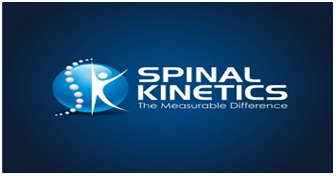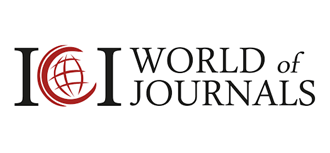Determination of Ovar Functionality in Cows Ending the Open Day Period, by Ultrasonography
Aguirre EGG*1, Galicia DJA2, Méndez PN3, Ortíz GS4, Zambrano GMA5, Villanueva CA6, Tadeo JMA°
1,2,3,4,5,6Faculty of Veterinary Medicine and Zootechnia, Benemérita Universidad Autónoma de Puebla, México
*Student from Faculty of Veterinary Medicine and Zootechnia
Submission: September 30, 2019; Published: October 14, 2019
*Corresponding author: Aguirre EGG, Faculty of Veterinary Medicine and Zootechnia, Benemérita Universidad Autónoma de Puebla, 7.5 Carretera Cañada Morelos - El Salado Tecamachalco, Pue, México
How to cite this article: Aguirre EGG*, Galicia DJA, Méndez PN, Ortíz GS, Zambrano GMA, et al. Determination of Ovar Functionality in Cows Ending the Open Day Period, by Ultrasonography. Dairy and Vet Sci J. 2019; 13(5): 555879. DOI: 10.19080/JDVS.2019.13.555879
Abstract
The objective of this study was to determine the efficiency in the use of ultrasound (US) for the identification of the functionality and presence of ovarian structures in dairy cattle. 69 multiparous Holstein and Jersey cows were examined, during the final period of the open days, in a range of 45 to 115 postpartum days, which are located in the milk cattle production module of the Zootechnical Post “El Salado”, belonging to the Faculty of Veterinary Medicine and Zootechnics of the Benemérita Universidad Autónoma de Puebla; in Tecamachalco, Puebla, México. Before making the reproductive diagnosis, the reproductive card of each cow was evaluated to know its history; and his body condition was evaluated. Each of the females was handled individually by introducing them to the milking parlor. Transrectal evaluations of the reproductive system were subsequently carried out by means of a linear transducer of the MEDISON SA 600 V ultrasound equipment.
The priority was to evaluate both ovaries, know the functionality, the presence of structures; mainly follicles, luteal bodies and measure these structures; as well as identify functional alterations such as the presence of cysts. The evaluations were recorded in the ultrasound equipment (US), and subsequently the data were captured in a variance database, for analysis and interpretation. The results of the study show a significant difference (<0.05), between the means of the groups (services / conception), that is, they have a greater number of services / conception when they have a body condition of 2 and decrease as Increase body condition. As the body condition increases, the open day’s decrease, from a body condition of 2 to 2.75, going from 158 days to 106 days, with a significant difference of 52 days, and there is also a significant difference between the CC of 2.25 to 2.75, with 44 open days.
The use of ultrasound compared to rectal palpation is more effective and has more applications, since it allows to visually characterize the reproductive organs and their possible pathologies. The ovaries contain a lot of information that helps diagnose the reproductive state of the cow, and to select the most appropriate treatment or reproductive intervention. The following ovarian structures can be distinguished by ultrasonography: stroma, blood vessels, corpus luteum, follicles and cysts. One of the advantages of the ultrasound technique is that, if we perform serial ultrasound of a cow, extra information is obtained about the physiological state of the ovaries (follicles; dominant, subordinate, growing or regression; or the presence of bodies lute, easy to visualize). When we analyze the reproductive status of animals by ultrasound and images taken from a group of cows during the open day’s period, to evaluate the follicular dynamics, the individual changes of follicles> 4 mm present in each ovary must be monitored. The work routine consists of a thorough review of each ovary to measure the follicles and determine their reproductive activity and thereby maximize the effectiveness of the treatments, especially those of synchronization of cows specialized in milk production.
Keywords: Ultrasonography; Activity and ovarian structures
Introduction
It is evident that the use of ultrasound and hormonal measurement have contributed to the research the basis to improve the knowledge of the reproductive cycle in cows and to be able to contribute new techniques applicable to routine control. Therefore, its cost justifies its use in reproductive aspects. However, many veterinarians who are not directly involved in the research should rely on their daily practice with techniques that improve the quality of service such as ultrasonography. In this case the farmer can already visualize what we explain on the ultrasound screen, there are no doubts or conjectures about an early positive diagnosis by palpation, which in some cases when this is done by the skill of the veterinarian, resorption may occur that they can only be demonstrated because the ultrasound image reveals it. In other words, rectal palpation imposes a barrier on us and only our ability to mentally visualize what we feel will allow us more or less accurate diagnosis. However, with ultrasound an image is available on which it is possible to interpret and specify that diagnosis, it is finally a technique that allows us to overcome the barrier imposed by rectal palpation. The correct use of ultrasound implies earlier diagnoses of pregnancy, confirmations of pregnancy and even sexing of the fetus. All of the above has a greater reproductive profitability of the farm. Finally, having an ultrasound device is a necessary investment for every doctor who is fully dedicated to reproduction [1].
An important concept when referring to follicular dynamics during the beef estrous cycle is that of follicular waves. Folliculogenesis is defined as a series of recurring processes of recruitment, selection, growth, maturation and ovulation during the female estrous cycle, regulated by a combination of interactions between hormones, growth factors, cellular communication systems and genes [2]. Some researchers argued that follicular growth was continuous and independent of the cycle [3-5], but Rajakoski [6] introduced this new concept of follicular wave, stating that Population of follicles that emerge in the ovaries during the estrous cycle are characterized by a growth phase, followed by a static phase and finally ovulate or enter atresia, with different development patterns, the most frequent being those composed of two [7-10] and three follicular waves [9-12].
It is also possible to find estrous cycles with 1 or 4 follicular waves, although it is not the most frequent [13-15]. Until now, there were no works that characterized the follicular dynamics presented by repeating cows or repeat breeder cows (RBC) throughout their spontaneous estrous cycles, possibly due to the difficulty of getting a batch of cows with these characteristics without hormonally intervening on them. Cows with this syndrome are characterized by having repeated normal cycles of normal duration, failing pregnancy at least 3 times in a row, due to multifactorial causes [16-18], a dynamic structure, where antral follicles develop from primordial follicles, which remain dormant for many years, until they are recruited into a growth wave. In their growth, the follicles go through several stages, which are: primordial, primary, secondary, tertiary and DeGraaf follicles [19].
A wave of follicular growth involves the synchronous development of a group of follicles. This is characterized by the development of a large dominant follicle, several subordinates that invariably become agressive. Some researchers have observed a preponderance of estrous 2-wave cycles, while others indicate a predominance of 3-wave cycles. A follicular wave usually has a duration of 8 to 10 days and the number of waves that occur during the estrous cycle depends on the period of life of the corpus luteum. They usually occur 2 to 4 during the estrous cycle, and approximately 75% of cows have 3-follicular waves [20]. The zero day of the cycle is the first day that the pre-follicle follicle disappears and coincides with the emergence of the first follicular wave. In 2-wave females, these begin on days 0 and 10 of the cycle; while in those of 3-waves, it begins on days 0, 9, and 16. The dominant follicle is ovulatory in the second wave in cows with 2-waves and in the third in 3-wave animals [21-26]. Follicular atresia is used to designate the normal process of follicular regression in the ovary and is applied to all follicles, whether cavitary or not [19].
Materials and methods
The present study was carried out during the months of August 2018 to November 2018, in the zootechnical post “El Salado”, belonging to the Faculty of Veterinary Medicine and Zootechnics of the Benémetita Universidad Autónoma de Puebla, México, in the milk module, with Holstein-Friesian cows and Jersey that end their period of open days, which had between 45 and 115 days postpartum, which were monitored by means of an ultrasonography device of the MEDISON S.A. 600 V brand, in order to check the functionality status of the ovaries as well as the Identification of ovarian structures and even their measurement to consider the time of ovulation and next fertilization. An evaluation of their body condition was also carried out and the reproductive cards of each cow were reviewed to have more accurate information on their reproductive activity [27-36].

To evaluate the follicular dynamics, the individual changes of follicles> 4 mm present in each ovary were monitored. The work routine consists of a thorough review of each ovary to measure the follicles and draw them on a spreadsheet according to their relative position. The form is individual for each animal, has a diagram of the right ovary and another of the left [37- 40]. In addition to the position of each follicle, its diameter and the position and diameter of the CL are noted. To determine the position of each follicle, the transducer is placed on each ovary and rotates on its longitudinal axis. The diameter of the follicles can be measured with the electronic caliber of the equipment. When daily follicular development is monitored, the position and diameter of the follicles are compared with those of the previous days and in this way the follicles that do not grow, those that grow, those that return and the appearance can be individualized and differentiated of new ones (> 3mm) or the disappearance or ovulation of the dominant follicle of the second or third wave.
The technique of examination in transrectal ultrasonography, fecal matter is removed from the rectum before introducing the transducer, applying a lubricant (petroleum jelly) to facilitate its introduction through the anal sphincter and then cranially advancing on the floor of the rectum. The 5 MHz linear type transducer is suitable for monitoring the reproductive organs since their emitted waves reach a depth of 9 to 10 cm from their surface, allowing the operator an adequate examination of all parts of the genital tract, making a displacement from right to left allowing visualization of the uterus and ovaries (Figure 1).
Results
Using ultrasonography, it can be observed that two days after a wave is detected, there is a follicle (dominant follicle) that grows faster than the others (subordinate follicles). At 6-7 days from the beginning of the wave the dominant follicle has reached its maximum size (15-17 mm) and the subordinate follicles have undergone a process of atresia. At this time, the dominant follicle can ovulate or otherwise enters a stationary phase, which lasts approximately another 6 days and in which it maintains its size and ovulatory capacity. If the ovulation of this follicle has not occurred then, an atresia process begins and another 9 days later its size has already dropped below 4 mm (Tables 1-7) (Figures 2&3).









Discussion and conclusion
The knowledge of the waves of follicular development and its regulation has great practical importance and allows us to predict in a quite exact way the response of the animals to the different hormonal control methods of the cycle. In a physiological sexual cycle, the fundamental factor that determines the fate of the dominant follicle (ovulation or atresia) is the level of progesterone when this follicle ends its growth phase. Thus, when progesterone levels are high (luteal phase of the cycle), the dominant follicle regression occurs, in the follicular phase, without while phase of the cycle, without the “brake” of the progesterone, the fate of the dominant follicle is the ovulation. Throughout the estrous cycle, typically 2 or 3 waves of follicular development occur. In heifers and during the early postpartum of multiparous cows, ovarian cycles with 2 waves seem more frequent, while adult cows usually have 3-wave cycles. This difference is conditioned by the duration of the corpus luteum cycle, logically less in a 2-wave cycle than in 3-wave cycles. Cycles with 4 follicular waves have also been detected and in these cases the duration of the cycle has been 24 days, with luteolysis occurring around day 20-21 of the cycle. Thus, the main factor that determines the duration of the cycle and therefore the existence of 2 or 3 waves per cycle, seems to be the life of the corpus luteum. In estrous cycles with 2 waves of follicular development, these can be detected on the day of ovulation (day 0) and on day 10 after ovulation.
This last follicle is the one that will ovulate, since the regression of the luteum corpus occurs on day 16-17 of the cycle, while the follicle that began its development on day 0 will normally undergo a process of atresia. In cycles with 3 waves these can be detected on days 0, 9 and 16 post ovulations, being the first two anovulatory because the luteal phase is maintained in these cases until day 19 of the cycle. Interestingly, this follicular dynamic is maintained at least during the first 2-3 months of gestation, with the presence of periodic waves occurring every 9-10 days in pregnant cows. Logically, these follicles never get to ovulate due to the inhibitory effect of progesterone produced by the luteum corpus of pregnancy.
For now, the biological role and significance of the 2 and 3 wave cycles is unknown. It has been suggested that estrogen production by the dominant follicle of the first wave of the cycle would somehow regulate the transport of the egg to the uterus. In cycles of 2 and 3 waves, the follicles of the second wave would induce the formation of oxytocin receptors in the uterus, necessary for the synthesis and subsequent release of PGF2; by this organ. In any case, it has been shown that the dominant follicles of any wave of the cycle are capable of ovulating, and what is equally important, that the fertility subsequent to the ovulation of any of these follicles is very similar.
References
- Manuel Fernández Sá Reproducción (2012) Control Ecográfico en Vacuno.
- Roche JF, Boland MP (1991) Turnover ofdominant follicles in cattle of different reproductive status. Theriogenology 35: 81-90.
- Donaldson L, Hansel W (1968) Cystic corpora lutea and normal and cystic Graafian follicles in the cow. Aust Vet J 44(7): 304-308.
- Dufour J, Whitmore HL, Ginther OJ, Casida LE (1972) Identification of the ovulating follicle by its size on different days of the estrous cycle in heifers. J Anim Sci 34(1): 85-87.
- Spicer LJ, Echternkamp S E (1986) Ovarian follicular growth, function and turnover in cattle: A review. J Anim Sci 62(2): 428-451.
- Rajakoski E (1960) The ovarian follicular systemin sexually mature heifers with special reference to seasonal, cyclical and left-rigthvariations. Acta Endocrinol 34(52): 1-64.
- Pierson RA, Ginther OJ (1988) Follicular populations during the estrous cycle in heifers: III time of selection of the ovulatory follicle. Anim Reprod Sci 16: 81-95.
- Ginther OJ, Knopf L, Kastelic JP (1989b) Temporal associations among ovarian events in cattle during oestrous cycle with two and three follicular waves. J Reprod Fert 87(1): 223-230.
- Stock AE, Fortune JE (1993) Ovarian follicular dominance in cattle: relationship between prolonged growth of the ovulatory follicle and endocrine parameters. Endocrinology 132(3): 1108-1114.
- Carrière PD, Amaya D, Lee B (1995) Ultrasonography and endocrinology of ovarian dysfuntions induced in heifers with estradiol valerate. Theriogenology 43(6): 1061-1076.
- Ireland JJ, Roche JF (1983) Development of non-ovulatory antral follicles in heifers: Changes in steroids in follicular fluids andreceptors for gonadotropins. Endocrinology 112(1): 150-156.
- Taya K, Kaneko H, Takedomi T, Kishi H, Watanabe G (1996) Role of inhibin in the regulation of FSH secretion and folliculogenesisin cows. Anim Reprod Sci 42: 563-570.
- Sirois J, Fortune JE (1988) Ovarian follicular dynamics during the estrous cycle in heifers monitored by ultrasonography. Biol Reprod 39(2): 308-317.
- Carrière PD, Harvey D, Lee B, Price CA (1994) Croissancefolliculaireet ovulations spontanées chez deuxvachesprésentant des structures ovarienneskystiques. Le Médecin Vétérinaire du Quebec 24: 166-170.
- Savio JD, Keenan L, Boland MP, Roche JF (1988) Pattern of growth of dominant follicles during the oestrous cycle of heifers. J Reprod Fertil 83(2): 663-671.
- Lafi SQ, Kaneene JB (1988) Risk factors and associated economic effects of the repeat breeder syndrome in dairy cattle. Vet Bull 58: 891-903.
- Bruyas JF, Fieni F, Tainturier D (1993) Le syndrome "repeat-breeding": analysebibliographique 1º partie: É Revuemed vet 144: 385-398.
- Pérez CC (2001) Seguimiento hormonal e imágenesecográficas de la patología ovárica envacas repetidoras de aptitud lá TesisDoctoral. Universidad de Córdoba, España, Spain.
- Wilde RO (2000) Profesor Asociado de la Cátedra de Zootecnia General I. Departament de Producción Animal, Facultad de Agronomía y Zootecnia.
- D’Occhio MJD, Jillella J, Lindsey BR (1999) Factors that influence follicle recruitment, growth and ovulation during ovarian superestimulation in heifers: opportunities to increase ovulation rate and recovery by delaying the exposure of follicles to LH. Theriogenology 51: 9.
- Campo E (1998) Aplicación de los Ultrasonidos Pie Medical en Fisiología yPatología de la Reproducció Facultad de Medicina Veterinaria, Universidad Agraria de la Habana-comunicación personal-LA Habana.
- Adams GP (1993) Dinámica folicular ovárica en el bovino adulto y prepú Resúmenes del Simposio Internacional de Reproducción Animal. Córdoba, Argentina.
- Agromeat (2010) www.agromeat.com/index.php?idnews=105201 Fecha de consulta Mayo 2011.
- Aldrich J (2007) Basic physics of ultrasound imaging. Crit Care Med 35(5): S131-S137.
- Bavera GA (2000) Curso de Producción Bovina de Carne, FAV UNRC.www.produccion-animal.com.ar
- Bo GA, Caccia M (2000) Ultrasonografía reproductiva en el ganado bovino (en línea) Córdoba Argentina Consultado 3 de dic 2010.
- Chaffaux S (1995) Evolution de I'image Échographique de produit de conceptionchez la vache. Bull. Acad. Vét Fr 55: 213-221.
- Evans ACO, Adams GP, Rawlings NC (1994) Follicular and hormonal development in prepuberal heifers from 2 to 36 weeks of age. J Reprod Fert 102(2): 463-470.
- Fortune JE (1993) Follicular dynamics during the bovine estrous cycle: a limiting factor in improvement of fertility? Anim Reprod Sci 33: 111-125.
- Ginther OJ, Knopf L, Kastelic JP (1989c) Ovarian follicular dynamics in heifers during early pregnancy. Biol Reprod 41(2): 247-254.
- Ginther OJ, Kotpf L, Kulick J, Martin S, Wiltbank MC (1996) Relationships between FSH and ovarian follicular waves during the last six months of pregnancy in cattle. J Reprod Fertil 108(2): 271-279.
- Hashimoto BE, Kramer DJ, Witala L (1999) Applications of musculoskeletal sonography. J Clin Ultrasound 27(6): 293-318.
- Kossoff G (2000) Basic physics and imaging characteristics of ultrasound. World J Surg 24: 134-142.
- McDougall S, Burke CR, Macmillan KL, Williamson NB (1995) Patterns of folicular development during periods of anovulation in pasture-fed dairy cows after calving. Res Vet Sci 58(3): 212-216.
- Pierson RA, Ginther OJ (1986) Ovarian follicular populations during early pregnancy. Theriogenology 26(5): 649-659.
- Savio JD, Boland MP, Roche JP (1990) Development of dominant follicles and length of ovarian cycles in post-partum dairy cows. J Reprod Fertil 88(2): 581-591.
- Sirois J, Fortune JE (1990) Lengthening the bovine estrous cycle with low levels of exogenous progesterone: a model for studyingovarian follicular dominance. Endocrinology 127(2): 916-925.
- Sunderland SJ, Crowe MA, Boland MP, Roche JF, Ireland JJ (1994) Selection, dominance and atresia of follicles during theoestrous cycle of heifers. J Reprod Fertil 101(3): 547-555.
- Thatcher WW, Driancourt MA, Terquiand L, Badinga M (1991) Dynamics of ovarian follicular development in cattle followinghysterectomy and during early pregnancy. Dom Anim Endocrinol 8(2): 223-234.
- Van Holsbeeck MT, Introcaso JH (2001) Physical principles of ultrasound imaging. Musculoskeletal ultrasound. (2nd edn), St Louis Missouri, Mosby, p. 1-7.






























